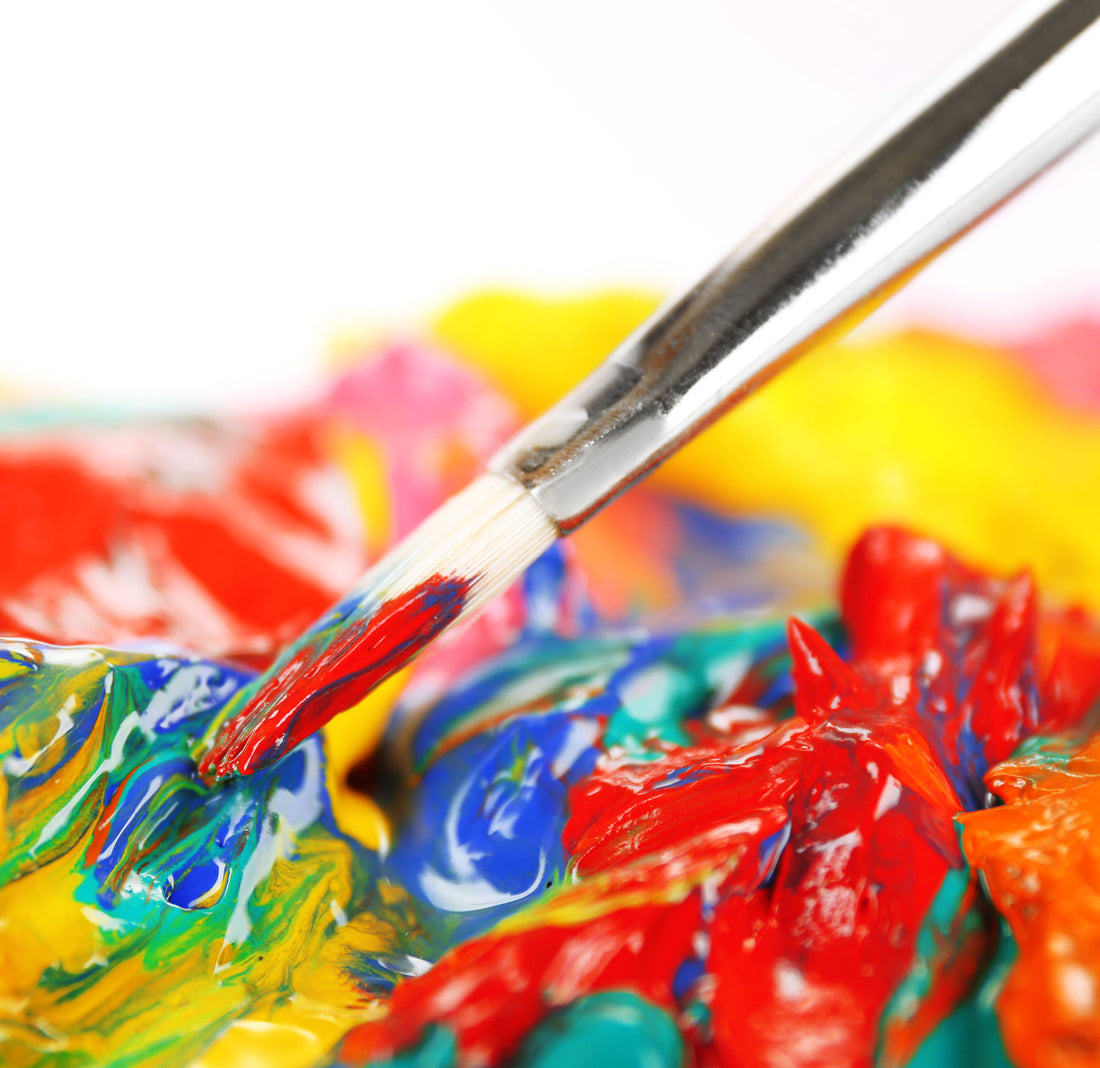So, you have your paints and your panels and your brushes. You have your palette and palette knives and any other tools an artist needs.
However, you aren’t completely sure how to go about mixing colors, or you know how to mix color but are struggling with getting a particular shade just right.
Don’t worry--we’re here to help. If you need a refresher course in how to mix paint color or you’re a beginner who needs a basic guideline, we’ve put together some tips about how to mix color.
Understanding Color Basics
Primary, secondary, and tertiary color identification is the basis of mixing color. You probably learned the acronym ROYGBIV early on in school or art class--the colors of the rainbow.
Primary colors are red, blue, and yellow. Secondary colors are orange, violet, and green. Tertiary colors are made by mixing primary and secondary colors and are not as bright; they’re ideal for creating natural-looking paintings as they are most often found in nature.
The Color Wheel: A Tool for Mixing Colors
A color wheel is a great tool to have on hand to see which colors to mix to achieve the shades you’re trying to create.
It also shows complementary colors. Understanding complementary colors will help you choose the correct contrast color and so influence the viewer’s perception.
Keep in mind that you can also buy different shades of primaries--reds, yellows, blues--such as Cobalt blue, cadmium red, lemon yellow, to name just a few.
This is helpful when you want a warm or cool shade of primary; warm yellow vs. cool yellow, warm red vs. cool red, and so forth.

To get really bright colors make sure to only use one color pigment when mixing. Check manufacturer’s website for information about this or on the product itself
Mixing Techniques: Creating Tertiary Colors
When you mix a primary and secondary color, you get a tertiary color. If you mix two secondary colors you’ll get a tertiary color, which will be muddy--gray, brown, or black.
To get yellow-green, blue-lilac, or violet-red, for example, you need to mix two secondary colors.
Use only one color pigment instead of several to make sure you get the brightest colors. Check the color itself or the manufacturer’s website to find out whether it contains one or more pigments.
Mixing lighter or darker colors follows two rules:
- You only need a little dark color to darken a light color
- You need a lot of white to lighten a dark color
Understanding Opacity and Transparency
Opacity also follows two rules. (Opaque means “covering” as in you don’t want your paint to show any previous color underneath it. Translucent means you purposely paint in a way that allows previous work to show through. You can determine whether a paint is transparent, semi-transparent, or opaque by looking at the paint tube itself, as the manufacturer usually calls this out.
- To make opaque paint opaque, you only need a small amount of opaque color
- To make opaque paint translucent, you need a great amount of transparent or opaque color
Blending Black and White: Essential Tips
Mixing black requires blending red, yellow, and blue (the primary colors), but it’s best to buy plenty of black and white paint as is because you’ll be using so much of both.
When mixing colors for natural--looking paintings, don’t blend your paint entirely. Mix the color until you achieve the desired shade and leave some slight variations; this provides depth and dimension when applied to canvas and creates a more natural look.
Considerations when Mixing Colors from Different Manufacturers
Mixing acrylic colors from different manufacturers who use different chemical compositions in their paints can result in problematic reactions. Be sure to use paints from the same manufacturer to avoid these. This usually happens when using a low quality paint mixed with a higher quality, artist grade paint.

A couple of other tips to remember when you’re mixing colors:
- Test your colors before you begin painting
- Write down your mixing ratios so you can mix the same colors again and again
Tools for Mixing: Brushes vs. Palette Knives
You can either use a paintbrush or palette knife when mixing paint colors. Some prefer to use brushes to mix color but this can be damaging to the bristles and it’s more difficult to get a thorough blend if you’re going for a very pure color.
Others prefer to use a palette knife; you won’t be sacrificing any brushes, the knife makes it much easier to get a thoroughly blended color, and it’s most useful for “scooping” up paint off the palette as it has that clean knife edge.

Recap and Conclusion: Mastering the Art of Color Mixing
So there you have it - a basic guide for how to mix color. Understanding color theory is most important, and remembering these tips and tricks should help you get off to a great start or add to your existing knowledge of mixing color.
Using the right tools such as palette knives can also be key to proper mixing techniques and save your brushes, so consider picking up a few or actually using the ones you have. Happy mixing!





